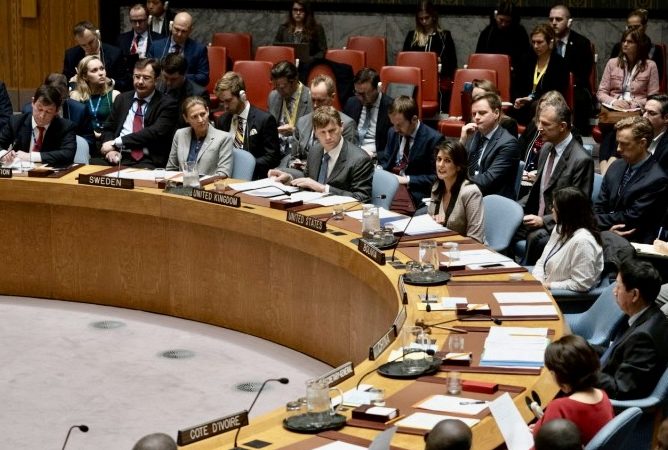By Khairunnikman Khairul Anwar
Constructivism as an International Relations theory became increasingly significant in the 1980s and has now become one of the established cores of the discipline. This article written by our analyst will examine the changes constructivism has brought to international relations’ directions and perspectives. It will discuss briefly on the rise of constructivism in the study of international relations and the core of the theory and the author will seek to answer the main objective of the article which is how constructivism has changed the direction and perspective of international relations.
Constructivism in International Relations
Most of the scholars argued that the end of the Cold War lifted constructivism onto the stage of debates in international relations theories. During that time, the more dominant theories of international relations such as neorealism or neoliberalism seems failed to explain how the cold war ended without any major conflicts. According to Guzzini, the end of the Cold War somehow proved that the world of international relations is not fixed, rather it exists independently of human action as well as cognition. So, the historical context and the theoretical discussion between international relations scholars, especially among neorealists and liberals helped led to a discussion for a constructivist approach.
To fully understand the basis of the theory of constructivism, we should look at what one of the famous constructivist’s scholars explained about the concept of it. According to Alexander Wendt, constructivism is a structural theory of the international system that makes the following core claims; states are the principal units of analysis for international political theory; the key structures in the states systems are intersubjective rather than material; and state identities and interest are in important part constructed by these social structures, rather than given exogenously to the system by human nature or domestic politics.
He added that social structure has three elements which are, – shared knowledge, material resources and practices. The social structure is a shared understanding, expectation and knowledge. These reasons influenced the actors of its nature of relations which towards either cooperative or conflict. Thus, we can see that constructivism offers different explanations in interpreting the states’ behavior in international systems.
This is because particularly, the main focus of constructivism are ideas and beliefs that influence the actors in the international scenes. Constructivists still did not ignore the importance of material facts, but they are secondary to ideas. For them, it is how the actors think about each other, basically through their ideas and belief that constructed their behavior towards the material forces.
An Alternative to Materialism
Before the theory of constructivism became established in the international relations’ field of study, it was much more dominated by two main political ideologies namely neorealism and neoliberalism. For neorealism and neoliberalism, they both believe in the determining power of material world over social world. As explained by Hurd (2008), neorealism and neoliberalism believe that international patterns and behaviors are the result of purely material forces, particularly the military hardware, strategic resources, and money that they see as constituting power.
On the other hand, constructivism offers something different. Constructivist refused to agree on the material claim, but rather argues that international systems are constituted by ideas where our international systems are about social interaction and social reality as well as human consciousness. Hurd literally agreed with Wendt (1992) who stated that state identities and interest are constructed by these social structures, rather than constructed by human nature as neorealist argue or economic growth as neoliberals maintain.
For instance, a purely materialist approach has difficulty explaining why the USA treated British’s nuclear weapon as any less threatening than North Korean’s nuclear weapon. Apparently, both of them possess and develop the same weapon. Well, the reason lies in the fact USA perceives North Korea as more likely to act aggressively toward them than the British. This sentiment is based on interpretations of social interactions and social reality between the countries involved such as history, rhetoric, and behavior and it set up the expectation that war with North Korea is more likely than war with the British, and hence leads to different policy strategies in response to their weapons.
The Construction of State Interest
For non-constructivists, the states’ interests are majorly constructed by the material resources and situation of the states. They are either go after survival, power, wealth, and security as in neorealism or economic interests as maintain by neoliberalism and marxism.
However, constructivist argues that the formation of states’ interests are determined by other factors such as states identity and international norms. As mentioned by Finnemore (1996), “Identity and interests are defined by international forces, that is, by the norms of behaviour embedded in international society. The norms of international society are transmitted to states through international organizations. They shape national policies by ‘teaching’ states what their interests should be”. Thus, international organizations are believed to be able to internalize identity and therefore to change identity into states.
For example, we can look at how United Nations Educational, Scientific, and Cultural Organization (UNESCO) has taught states how to develop science bureaucracies. Science policy bureaucracies only exists in a very few countries during 1950s. At that time, UNESCO began an effort to establish them around the world successfully to such a degree that by 1975, the number had increased to nearly ninety. UNESCO hence successfully injected the idea that in order to be a ‘modern civilized’ state, having a science policy bureaucracy was a necessary ingredient.
Conclusion
As a conclusion, constructivism approached the international relations in a different view and angle from others dominant theory, where they have shown that culture and identity help in shaping the interests and constitute the actors in the international systems. They also have demonstrated that ideas, beliefs and social interactions among actors matter in international relations. Constructivism has changed the international relations in a way that they provide other alternative from theories that being too focus on material forces and economic factors towards another perspective where the spotlight is on interest, identity, cultural and relationship that state may have with one another.
References
Guzzini, Stefano. 2000. “A Reconstruction of Constructivism in International Relations.” European Journal of International Relations 155.
Hurd, Ian. 2008. 17: Constructivism, Ian Hurd Chapter of The Oxford Handbook of International Relations. Edited by Christian Reus-Smit and Duncan Snidal. Oxford University Press.
Jackson , Robert, Georg Sørensen, and Robert H. Jackson. 2012. Introduction to International Relations: Theories and Approaches. OUP Oxford.
Mearsheimer, John J. 1994. “The False Promise of International Institutions.” International Security 19 (3): 5-49. doi:10.2307/2539078.
Nugroho, Ganjar. 2008. “Constructivism and international relations theories.” Jurnal Global dan Strategis 85-98.
Wendt, Alexander. 1992. Anarchy is what States Make of it: The Social Construction of Power Politics. http://www.academia.edu/4915419/Anarchy_is_what_States_Make_of_it_The_Social_Construction_of_Power_Politics_Author_s_Alexander_Wendt_Source_International
Wendt, Alexander. 1994. “Collective Identity Formation and the International State.” The American Political Science Review 88 (2): 385. doi:10.2307/2944711.
—. 1999. Social Theory of International Politics. Cambridge University Press
The writer is the analyst at Arthos Sdn. Bhd.






